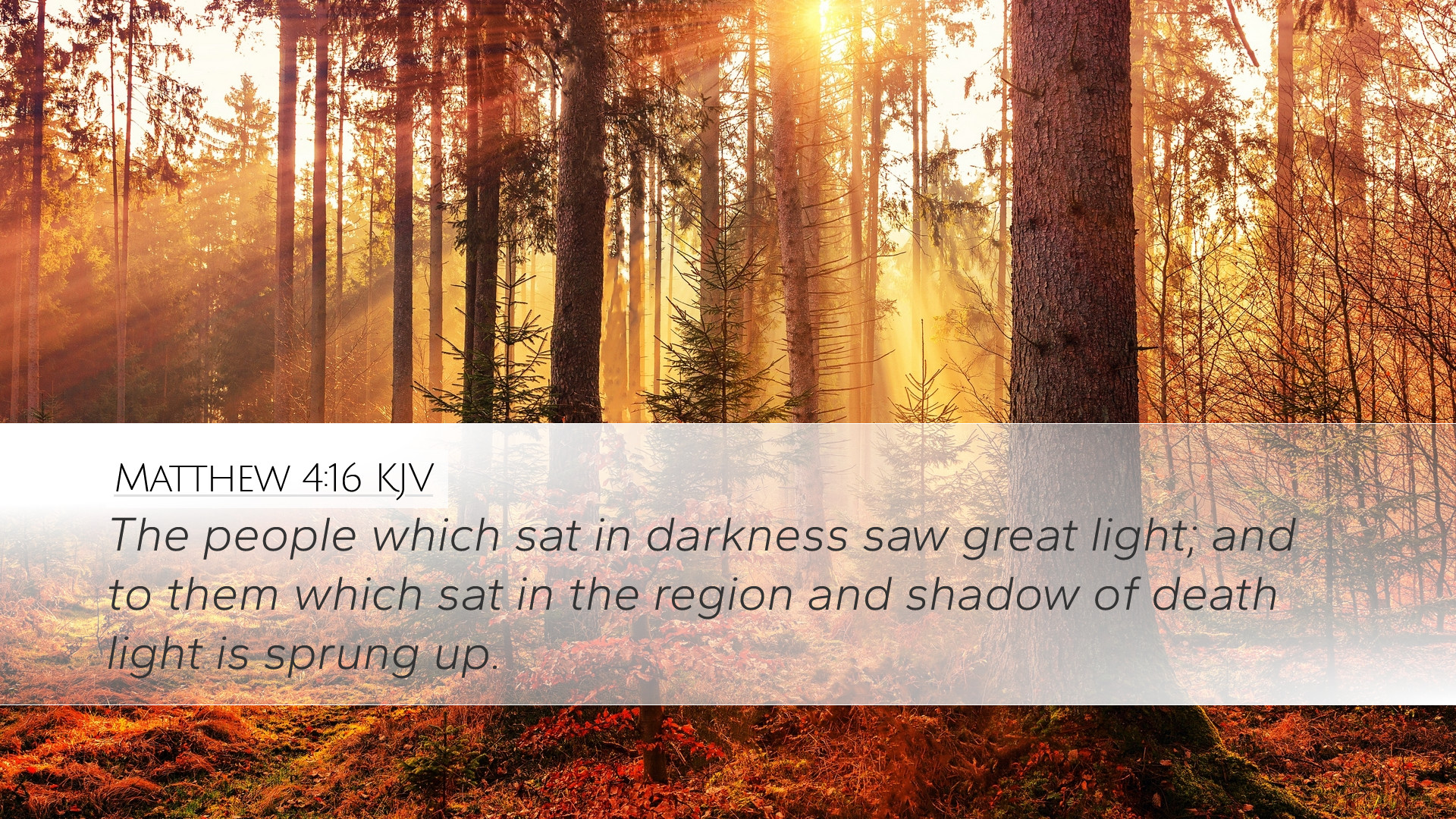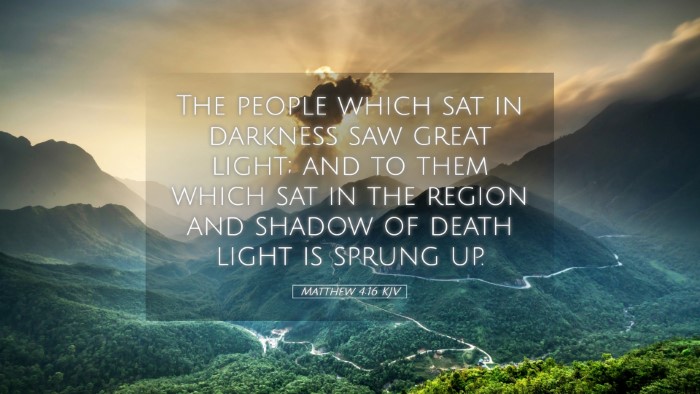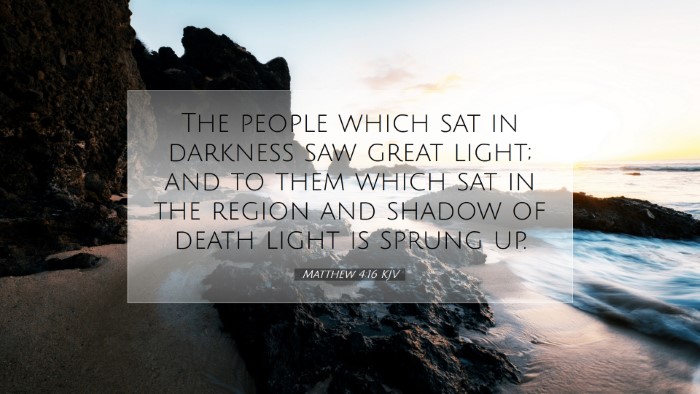Matthew 4:16 Commentary
Verse Context: "The people which sat in darkness saw great light; and to them which sat in the region and shadow of death light is sprung up."
Understanding the Verse
This verse is a profound proclamation of the coming of Christ, who is the embodiment of light in a world overshadowed by darkness. Here, Matthew cites the prophecy of Isaiah (Isaiah 9:2), indicating the fulfillment of Old Testament prophecy in the ministry of Jesus. This moment marks a critical juncture where hope emerges in a narrative often characterized by despair.
Thematic Analysis
Thematically, Matthew 4:16 encapsulates the duality of light and darkness, which is prevalent throughout Scripture. Light symbolizes knowledge, purity, and divine presence, while darkness represents ignorance, sin, and separation from God.
- Light of Christ: Christ is portrayed as the light that illuminates the hearts and minds of the people, offering salvation and redemption.
- Darkness of Despair: The phrase "sat in darkness" highlights the deep spiritual stagnation and moral degradation of those in need of deliverance.
Commentary Insights
Matthew Henry's Commentary: Henry emphasizes the great contrast between the light and death that Jesus brings. The enlightening of those who dwell in darkness signifies not just a physical illumination but a profound spiritual awakening that transforms their lives. He notes that the light referred to is not merely an abstraction but is the incarnate Word—Jesus Himself.
Albert Barnes' Notes: Barnes explains that the "great light" signifies the coming of Christ into a world marked by spiritual and moral contourlessness. He asserts that this verse emphasizes the mercy of God in sending light to guide those who are lost. Barnes also highlights the geographical aspect of "the region and shadow of death," pointing towards the Gentiles and underscoring a universal reach of the Gospel.
Adam Clarke's Commentary: Clarke provides a rich historical relevance to this verse, illustrating how it points to the Gospel's expansive personal invitation to all people. He notes that the "shadow of death" connotes a state of vulnerability and despair prior to Christ's intervention. Clarke interprets this 'shadow' as the condition of all humanity without hope in God, thus highlighting the necessity and urgency of Christ's mission.
Theological Implications
The statement about those who “sat in darkness” resonates deeply with the doctrine of total depravity, demonstrating the human condition apart from divine revelation. The darkness represents a world devoid of hope and light—aptly depicting humanity's plight before encountering Christ:
- Incarnation: This verse brilliantly encapsulates the theological importance of the Incarnation: God coming as light into the midst of darkness.
- Mission of the Church: Reflecting Christ's light is essential for the church's mission, urging believers to actively participate in extinguishing darkness through evangelism and acts of service.
- Hope and Redemption: This passage serves as a source of great hope for Christians, reminding them that no situation is too dark for the light of Christ to penetrate.
Pastoral Applications
For pastors, this verse is an invitation to bring the light of Christ into the community, particularly to those who feel lost or hopeless. The implications are particularly significant in reaching out to marginalized communities:
- Preaching Hope: Pastors can draw on this text to assure their congregations that the Gospel is intended for all, especially those who believe they are trapped in darkness.
- Community Outreach: Emphasizing outreach efforts to those living in despair can lead to meaningful ministry that mirrors the light of Christ.
- Cultivating Light: Encouraging a lifestyle that reflects the light of Christ in everyday activities instills a powerful testimony in both congregations and communities.
Conclusion
Matthew 4:16 serves as a critical reminder of the transformative power of Christ as light entering a dark world. The insights drawn from historical commentaries enrich our understanding of this verse, emphasizing its application across theological and pastoral contexts. The collective insight from Matthew Henry, Albert Barnes, and Adam Clarke highlights not only the prophetic significance of this moment but also its ongoing relevance to believers today. As such, it implores us as followers of Christ to embrace our identity as bearers of this light in a world that desperately needs hope and redemption.


